Main rules
Ergonomics in interior design has its own specifics for each room, but some principles are relevant for the entire apartment:
- 50/50. This is the ratio of furniture to empty space: interior items can take up less than 50%, but in no case more than this figure.
Important! In a child’s room, the ratio should be reduced to 30/70, leaving more free space.
- 70 centimeters. Take this distance as a basis when planning passages, openings between furniture, etc. In a tighter space, people feel uncomfortable, and it is also unsafe.
Important! To improve ergonomics, the distance between the sides or objects in the rooms/apartments of elderly people is made wider – 90-100.
- Individual solutions. Use custom-made furniture for homes with non-standard layouts and dimensions. The trick will help you fit more functionality into a smaller space.
- Sockets. The location of power sources depends on the arrangement of furniture, their sufficient number guarantees the convenience of performing household tasks.
- Lighting. There should be a lot of light, this is also part of ergonomics! Backlighting provides comfort and safety.
What is ergonomic furniture?
Ergonomics involves the placement of two types of furniture:
- Ordinary, but selected taking into account the dimensions of the residents.
- Special ergonomic, created in accordance with the physiological needs and structure of the human body.
The first includes a kitchen set. The standard height of the countertop of 86 cm is not suitable for everyone. If the height of the hostess is 150-160, it is better to reduce the height of the work surface to 82 cm from the floor. Tall people 180-190 will find it more convenient to cook on a table 92-94 centimeters high.
The same applies to the placement of upper cabinets with shelves – the taller the person, the higher they should be installed.
Important! If 2 or more people live in the apartment, the dimensions of the kitchen furniture are selected for the one who cooks more often. If the kitchen is used equally by two people of different heights, the set is made according to the rules of ergonomics for the taller person, and for the short one, the furniture is supplemented with a small footrest. The second option is to order furniture according to the “average values”.
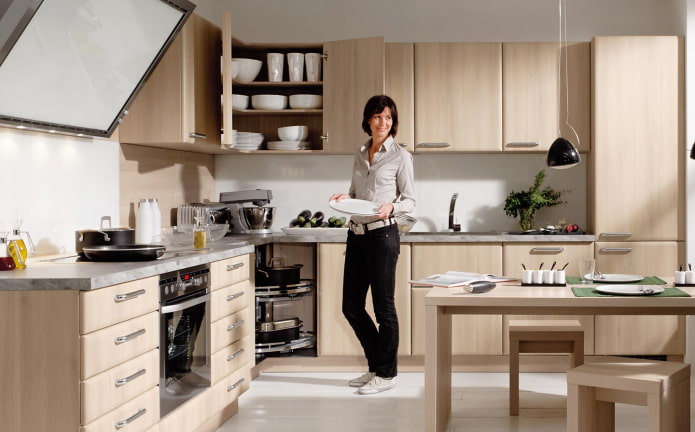
A growing children’s desk is ergonomic furniture. A table + chair set with the ability to adjust the height of the seat, tabletop, and angle of the work surface. Some models are additionally equipped with special footrests to ensure proper seating.
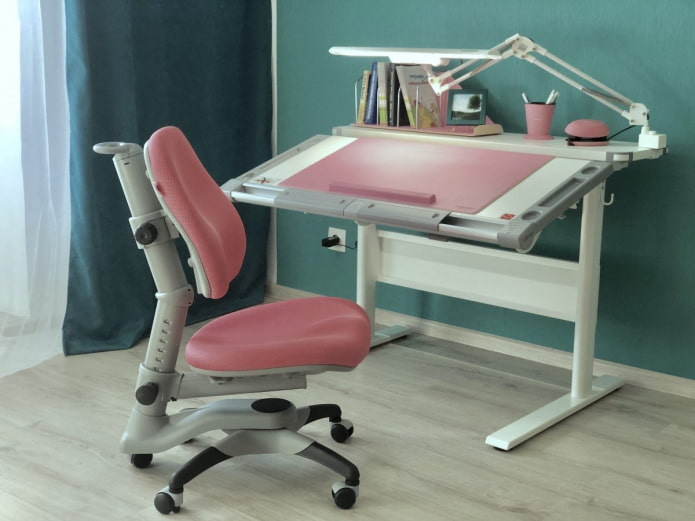
The second example of ergonomics is a mattress. For small children, there are special cocoons that allow babies to take the most comfortable position, reminiscent of the position in the mother’s womb.
For adults, beds with a transformable base and anatomical mattresses have been invented. Together, these two details allow you to take the most comfortable position for sleeping or resting. Some variations have relax functions (legs above heart level), anti-snoring (headboard is raised by 7 degrees).
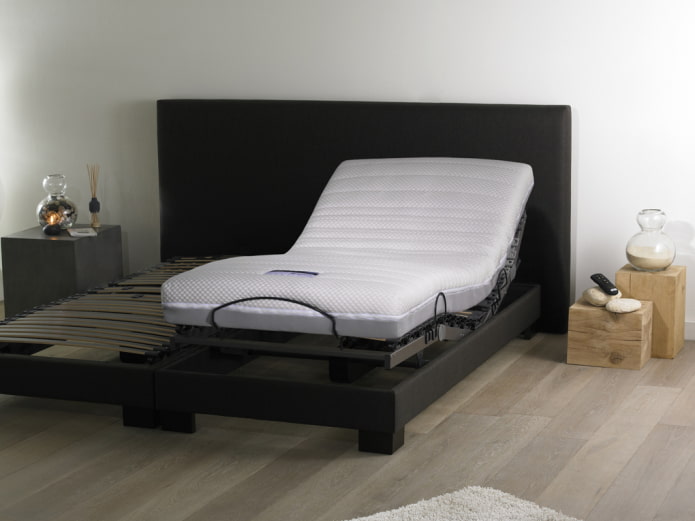
Features of ergonomics in the interior of rooms
Creating an ergonomic space in each individual room has its own features that must be taken into account.
Living room
The main space of the hall is occupied by a sofa and a TV: the basic rules of living room ergonomics are based on their interaction.
- Height from the floor. The eye level of a sitting person should correspond to the level of ⅓ of the height of the equipment below. To properly install the TV, take a comfortable position on the sofa (the one in which you are going to watch TV) and look at the opposite wall – where your gaze rests, there should be a line of thirds (one part under the line, two – above).
- The distance between the eyes and the screen. Depends on the size of the screen. The minimum value for a 42” diagonal is 1.6 m, 50” — 1.9 m, 65” — 2.6 m.
Additional principles of living room ergonomics:
- Coffee table. Flush with the height of sofas, armchairs or 5-7 cm lower than the seat. Placed half a meter from upholstered furniture.
- Soft zone. Armchairs that are separate should be removed from each other and from the sofa by 1-3 meters. Less – it will be too cramped, more – during a conversation, those sitting will have difficulty hearing each other. The height of the seats is selected individually, the most correct option is when the knees are bent at 90 degrees. Choose chairs with armrests.
- Applications for comfort. It is convenient to put a phone or a glass of water on the side table. The bench allows you to stretch your legs and relax.
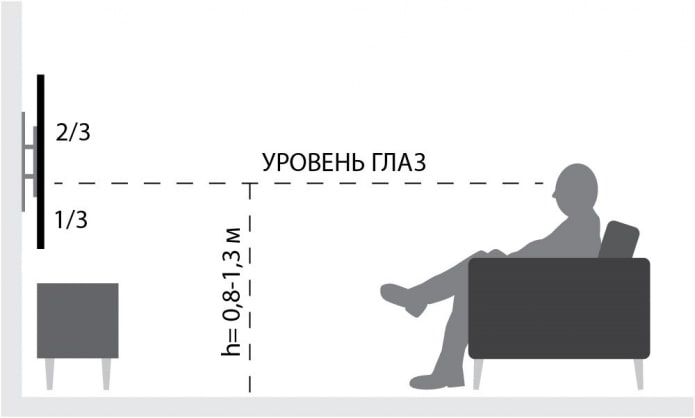
Bedroom
Thinking through ergonomics in bedroom interior design begins with choosing a bed. The length of the mattress is calculated using the formula height + 30 cm, the width is selected individually – the more space you need while sleeping, the wider the mattress you should take.
As for installation, it is more convenient if there are passages at the sides and at the foot of the bed, at least 60-70 centimeters wide. In small rooms, it is permissible to push the bed with one side against the wall, but it is better not to use this technique in the rooms of elderly people.
According to the rules of ergonomics, 1 meter should be left from the bed to the dressing table, and 1.2 meters to the chest of drawers or closet with things.
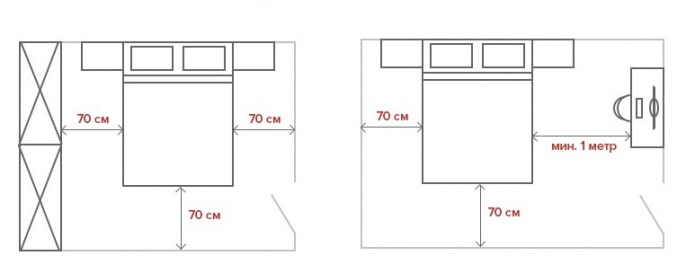
Hallway
Creating an ergonomic hallway is not an easy task. The main problem of hallways is their small size, which makes organizing storage difficult. Therefore, first of all, get rid of the excess: think about what is not necessary to store near the front door?
Let’s move on to the arrangement of furniture: when planning, proceed from the location and opening of the doors.
- Do the doors open into the hallway? Be prepared to leave passages of 1.4-1.5 m.
- Do they open into adjacent rooms? 0.9-1 m is enough.
That is: if in a hallway, one and a half meters wide, a sliding wardrobe takes up 70 cm of space – according to the canons of ergonomics, it should be replaced with a narrower chest of drawers up to 0.5 m or an open hanger. You shouldn’t make a wardrobe for storing outerwear narrower than 60 cm – we’ll talk about this in the section “Dressing room and wardrobes”.
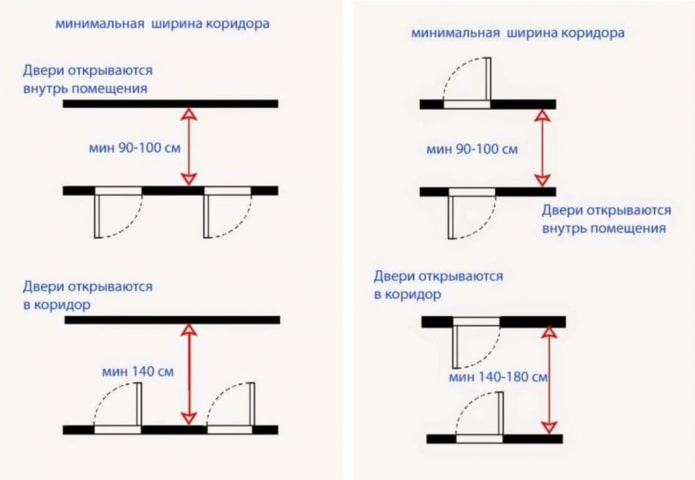
Children’s room
The task of parents is to provide the child with a functional space in which he will feel comfortable playing or doing homework. Important nuances of children’s ergonomics:
- The height of the chair and table is selected based on the child’s height – see the table below.
- The height of the shelves in the closet also depends on the child’s height – maximum 1.3 m at 5-6 years old, 1.7 m at 9-11.
- The minimum dimensions of the bed for children 3+ are 70 * 160 centimeters.
- The passages are increased to 80-90 cm to eliminate the possibility of impacts.
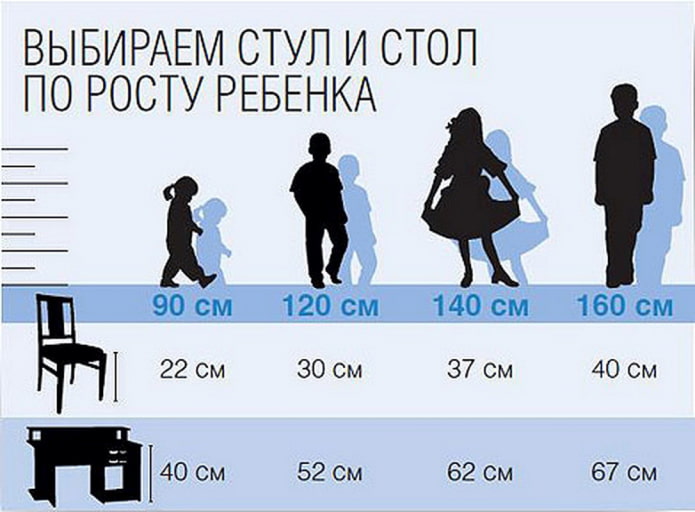
Wardrobe and closets
The best way to make the perfect closet is to assemble it “for yourself”, taking into account personal preferences. To do this, first make a list of what exactly will be stored in the closet, and then design a suitable model, observing the principles of ergonomics. Basic values for ergonomics:
- Depth from the wall to the doors. To prevent clothes on hangers from wrinkling, and the doors close tightly, the depth of the inner part (to the guides in the compartment) should be at least 50-55 centimeters for regular clothes, 60-65 for outerwear. It is more reliable to measure the widest hangers with clothes, and start from these values.
- Height of compartments. Shirts take up 110-120 cm, dresses 150-180, outerwear – 160-180, trousers on special hangers ~ 140.
Advice! It is better to organize storage of things without hangers in drawers – they are more convenient and more capacious than shelves.

Office and workspace
Not every apartment has a separate office for work, but almost everyone has a workspace at home. The main task when equipping a corner for work is to choose a comfortable table + chair.
- Table. Width 60-80, length at least 120, height – 72-80 (depending on height).
- Chair. Choose a model with an adjustable seat height so that all family members can choose comfortable parameters for themselves. For greater convenience, the chair is supplemented with a footrest – it provides a more anatomical posture during work.
- Computer. Experts who study and create the principles of ergonomics advise moving the screen 45-55 cm from the eyes, and the keyboard 10-15 centimeters from the edge of the tabletop.
Advice! For left-handers, the table is placed with its right side facing the window, for right-handers – with its left side.
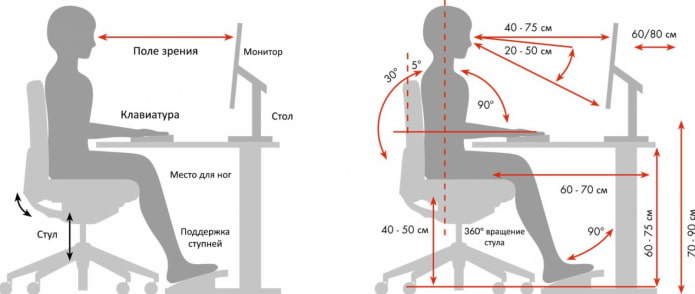
Kitchen
There is a huge amount of material on kitchen ergonomics: studies include the optimal height of the countertop, dining table, bar counter, chairs, cabinets and shelves. In addition, ergonomics includes recommendations for the placement of equipment, creating a work triangle, and much more.
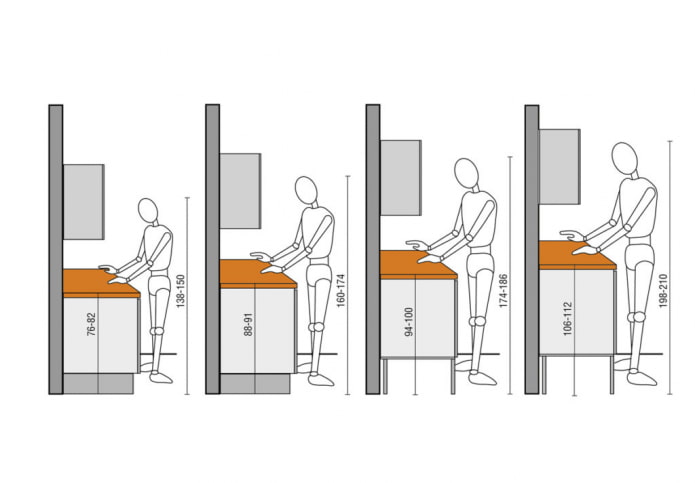
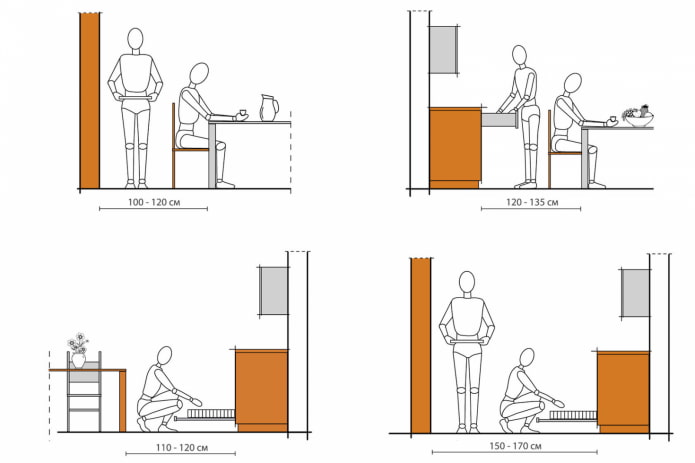
Bathroom
Bathroom ergonomics begins with the choice of plumbing dimensions: bathtub, shower stall, toilet. In addition to their dimensions, you should take into account the distances – for example, in front of the shower or bowl, a free zone of ~ 1 m2 is left, on the side of the toilet, 25-30 cm is required to walls or nearby objects.

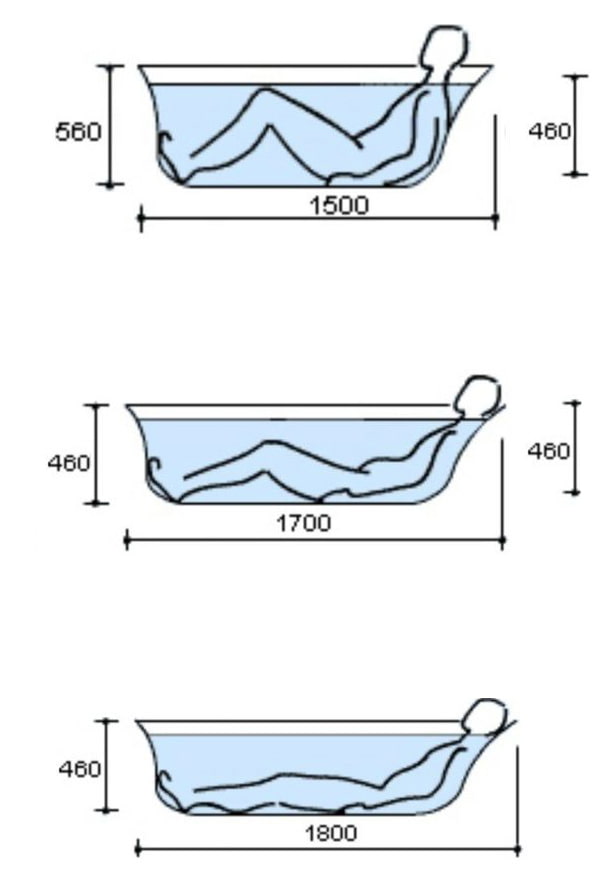
Compliance with the principles of ergonomics is not mandatory, but they will help to organize a truly comfortable space for living.
Now reading:
- Curtain: what is it and how to create it? Options and methods of use on the site.
- Gazebos for the dacha: 40 real photos, options and design ideas.
- Bathroom Designs in a Private House: 35 Photos and Interior Design Ideas
- Corner hallway for the corridor: ideas and photos for compact spaces.
- 60 Small Kitchen Design Examples: Inspiration and Interior Ideas